A Conversation With Terence Nance (AN OVERSIMPLIFICATION OF HER BEAUTY)
(An Oversimplification of Her Beauty is now available on DVD through Cinema Guild. It opened theatrically in NYC on Friday, April 26, 2013. It world premiered in the New Frontier section of the 2012 Sundance Film Festival. Visit the film’s official website to learn about more upcoming screenings. Full disclosure: Paul Sbrizzi is an Associate Programmer at the LAFilmFest.)
Terence Nance is in L.A. for a hot minute: the LAFilmFest is screening his elaborate, soul-searching feature debut An Oversimplification of Her Beauty. He looks like a party with his chunky fro, bold fashion risks and lethal-distance smile. But there’s something reserved about him—his choice of words is often bookish and there’s a sense that he needs to push through a certain shyness to confide his thoughts about himself and his work.
The film is a bolt from the blue in the often samey world of American indies—it’s full of formal experiments, including extended animated sequences executed in a variety of styles and techniques. Nance juxtaposes hard logic with dream logic to excavate his own psyche and romantic history, and trace the trajectory of his it’s-complicated relationship with fellow artist Namik Minter.
Hammer To Nail: How did this whole project start in your brain? How long ago did it all start coming together?
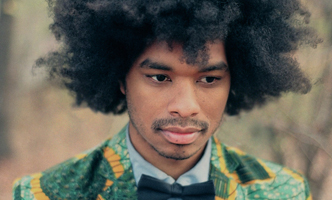 Terence Nance: In 2006 I made the short film; I was in school at the time, grad school. It was called How Would You Feel? But it was a really long short film, it was like 40 minutes; I wrote it in one night, after I was stood up by Namik, and after that was done, you know, I had to finish school still. I had another year, and then I moved to Paris, and when I was in Paris I decided to extend it into An Oversimplification because I just kinda felt like it wasn’t done, it wasn’t what I wanted to say entirely. Specifically in the fact that the short film was fiction, completely, so I kinda tried to build in some non-fiction elements.
Terence Nance: In 2006 I made the short film; I was in school at the time, grad school. It was called How Would You Feel? But it was a really long short film, it was like 40 minutes; I wrote it in one night, after I was stood up by Namik, and after that was done, you know, I had to finish school still. I had another year, and then I moved to Paris, and when I was in Paris I decided to extend it into An Oversimplification because I just kinda felt like it wasn’t done, it wasn’t what I wanted to say entirely. Specifically in the fact that the short film was fiction, completely, so I kinda tried to build in some non-fiction elements.
H2N: So how did you come up with this kind of structure, the voice-over with these empirical facts about yourself and the sort of crazy, flowing visuals?
TN: It wasn’t like a process for me of coming up with it, in a weird way; I kind of got stood up and I literally wrote it that night, like just in about an hour and a half, so it kinda just flew out based on the experience and I guess the most natural way for me to relate that experience to somebody, in a way to preserve how funny I thought it was, but also [TN laughs] how heartbreaking it was, and how convoluted, and complicated, and strange, so it was very much sourced in that moment. I think I was watching a lot of things that definitely pointed me in that direction, but also I wanted to make a movie that was participatory. I wanted to feel like a participatory, engaged experience, in a very direct, non-symbolic way, or non-allegorical way, but like just directly in the language I wanted it to be participatory. So that was also—something that I identified after I wrote it, that was [TN laughs] you know, a good piece of my goal, of my purpose I guess, for making it and putting it out.
H2N: I’m wondering in terms of the context of the movie, are you more like a film person or do you think of the film as coming from more of a fine arts point of view?
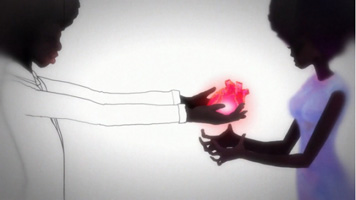 TN: Well I wrote the movie very purposefully in the form of a song. That’s why it’s verse-chorus, verse-chorus, so—and I come from music and that’s what I was comfortable writing—so I guess I would say it’s kinda neither. It’s mainly sourced in music, and kind of trying to choreograph images and movement, performance, and that type of thing into a film. But while I was making the film I started to make other short films—I had made one short film before this one—before How Would You Feel?—that was pretty much in the same exact style, and it’s called Exercise in Rejection, and it was based on an experience I had, but it’s just two minutes long, so it was sorta like trying to bring what I knew about songwriting into this more elegiac, longer, more thorough storytelling method. I’m also a visual artist and I do make films but I mostly started with songs and music.
TN: Well I wrote the movie very purposefully in the form of a song. That’s why it’s verse-chorus, verse-chorus, so—and I come from music and that’s what I was comfortable writing—so I guess I would say it’s kinda neither. It’s mainly sourced in music, and kind of trying to choreograph images and movement, performance, and that type of thing into a film. But while I was making the film I started to make other short films—I had made one short film before this one—before How Would You Feel?—that was pretty much in the same exact style, and it’s called Exercise in Rejection, and it was based on an experience I had, but it’s just two minutes long, so it was sorta like trying to bring what I knew about songwriting into this more elegiac, longer, more thorough storytelling method. I’m also a visual artist and I do make films but I mostly started with songs and music.
H2N: And I guess, just in terms of visual style, right from the opening credits—it’s not a style that we’re used to seeing in the film world. Is it harkening back to any specific tradition or did it spring fully formed from your mind…?
TN: I can’t directly identify where it came from [TN laughs] reference-wise, but some of the movies I was watching were like Dogville and Manderlay and The Perfect Human by Jørgen Leth—that was a big influence. Amélie is a big influence—especially the first 15 minutes. I would say some of that is produced with so much money and so much production value that it’s difficult to relate it visually to what I ended up doing [TN laughs], but also Michel Gondry’s films are probably in there, and definitely everything Charlie Kaufman ever wrote, and I think there’s a lot of—I didn’t see this movie until I was pretty much done with my movie, but 8½ was a really big—I identified a lot of what is in my movie [with that], because it’s all about process and love, you know what I mean? So it’s just sort of like, you see things—but I think all of those things together. I think my main influence is the blues, really, and books—specifically Louise Erdrich, Toni Morrison, and kinda the disjointed, elegiac, novelistic, long way—verbose way—of telling stories; melodramatic way of telling stories. It’s really in books, but I think it’s kind of frowned upon in movies in a certain way, but you know I like that sort of melodrama when you’re examining a more internal reality, ‘cause I think a lot of people are like that internally—they’re just afraid to say so [TN laughs].
H2N: So do you think the process of making this movie—did it help you to know yourself better, or was it in any way therapeutic, or did it just dig up stuff that leads to more stuff?
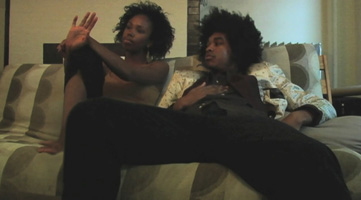 TN: I don’t think it was therapeutic at all, but I also don’t think it was necessarily re-hashing or making anything worse for me. I think, you know, for me it was making a piece of artwork, and very early I had to divorce it from being cathartic or anything like that, at least consciously. Because I think that would’ve made it overly sentimental, or something like that, in its execution. So for me it was trying to consecrate something, and make it beautiful in telling the story. Which I think is the central idea of the blues. Like something bad happened, you know, let’s just make a song about it [TN laughs]. And really go into it, and I think it’s part of my personality to be nostalgic and indulge my feelings of love relationships I’ve had, and constantly try and keep ‘em present in my life and in my mind. Because, you know, the movie’s a celebration of those relationships and those women that have informed my emotional development and hopefully it worships them, and hopefully it honors them in a way, and honors the experiences that I had with them.
TN: I don’t think it was therapeutic at all, but I also don’t think it was necessarily re-hashing or making anything worse for me. I think, you know, for me it was making a piece of artwork, and very early I had to divorce it from being cathartic or anything like that, at least consciously. Because I think that would’ve made it overly sentimental, or something like that, in its execution. So for me it was trying to consecrate something, and make it beautiful in telling the story. Which I think is the central idea of the blues. Like something bad happened, you know, let’s just make a song about it [TN laughs]. And really go into it, and I think it’s part of my personality to be nostalgic and indulge my feelings of love relationships I’ve had, and constantly try and keep ‘em present in my life and in my mind. Because, you know, the movie’s a celebration of those relationships and those women that have informed my emotional development and hopefully it worships them, and hopefully it honors them in a way, and honors the experiences that I had with them.
H2N: And what about—I guess to some extent the film was a collaboration with Namik? What was your working relationship in that sense?
TN: Yeah it’s 100% a collaboration with her; without her participation it would not have existed at all. I mean our relationship, in general, is informed by the projects we make together. It’s even in the movie—we met making t-shirts together and then made other movies together; we made an installation together. So this is just one of many things that we’ve made in collaboration with each other. So that is sort of bigger than our actual—it is definitely bigger than our actual kind of romantic connection… that does not exist anymore [TN laughs]. And you know she’s a consummate professional, and she’s just a super-mysterious person generally, so it’s kinda like, you’re always kinda—I was always just walking around, “What is she thinking, what is she doing? What’s behind that? What’s behind that?” So you know, for me it’s probably a little more difficult to pull out what it actually was, but we work really well together, and I thank her for her participation ‘cause I wouldn’t be here with you right now if she didn’t say yes [TN laughs].
H2N: So actually in a way it’s a super-intimate relationship.
TN: Yeah, it’s definitely—at some point it was super-intimate in a lot of ways, but it definitely has continued to be intimate creatively.
H2N: What about all the different visual styles you used for the animation? Did you conceptualize that or was it an intuitive thing?
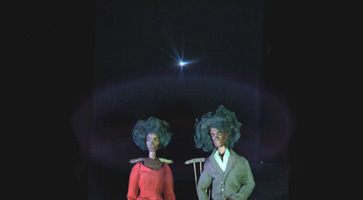 TN: It came out in so many different ways ‘cause it just really… it took so long [TN laughs]. It’s kind of difficult to really map the progress of idea to production to finishing the specific pieces of animation, but, you know, I knew I wanted them to all be different and all serve to separate the experiences that they’re articulating, and make each of them taste different and feel different, because if all the animation had been one thing, one style, it would’ve felt like you’re going back to the same world emotionally, when really each of the moments that it’s articulating is a different world. Like the letter that I write to her is a different world, a different voice than the letter she writes to me, you know? So, to change out the palette, the tools, the medium was really important in each of them, and also I just wanted to, you know, try things and make the film feel like the way I process experiences, which is very informal and kinda like—I wouldn’t say erratic, but just—it’s diverse. Like every day’s a different color, you know? And every person’s a different feeling, a different smell. And that’s why the animations are different, because they’re talking about different relationships with different people, and in each of those I was a different age, I was in a different place, the person was a different age, from a different country, from a different—you know? So all those things. I wanted to communicate the epicness of this, like, young, seemingly mundane life that has a certain range to it—the use of all the different styles communicates that.
TN: It came out in so many different ways ‘cause it just really… it took so long [TN laughs]. It’s kind of difficult to really map the progress of idea to production to finishing the specific pieces of animation, but, you know, I knew I wanted them to all be different and all serve to separate the experiences that they’re articulating, and make each of them taste different and feel different, because if all the animation had been one thing, one style, it would’ve felt like you’re going back to the same world emotionally, when really each of the moments that it’s articulating is a different world. Like the letter that I write to her is a different world, a different voice than the letter she writes to me, you know? So, to change out the palette, the tools, the medium was really important in each of them, and also I just wanted to, you know, try things and make the film feel like the way I process experiences, which is very informal and kinda like—I wouldn’t say erratic, but just—it’s diverse. Like every day’s a different color, you know? And every person’s a different feeling, a different smell. And that’s why the animations are different, because they’re talking about different relationships with different people, and in each of those I was a different age, I was in a different place, the person was a different age, from a different country, from a different—you know? So all those things. I wanted to communicate the epicness of this, like, young, seemingly mundane life that has a certain range to it—the use of all the different styles communicates that.
—Paul Sbrizzi








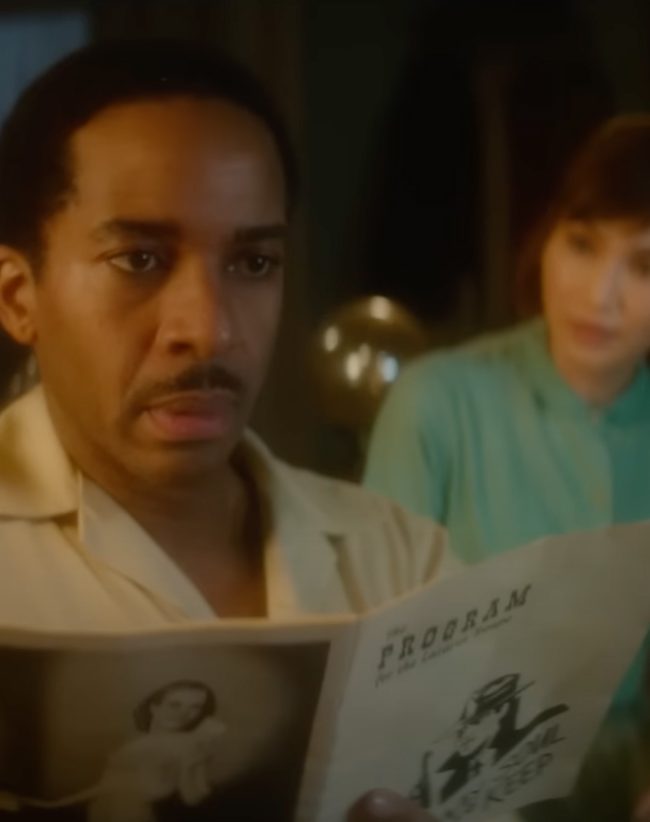
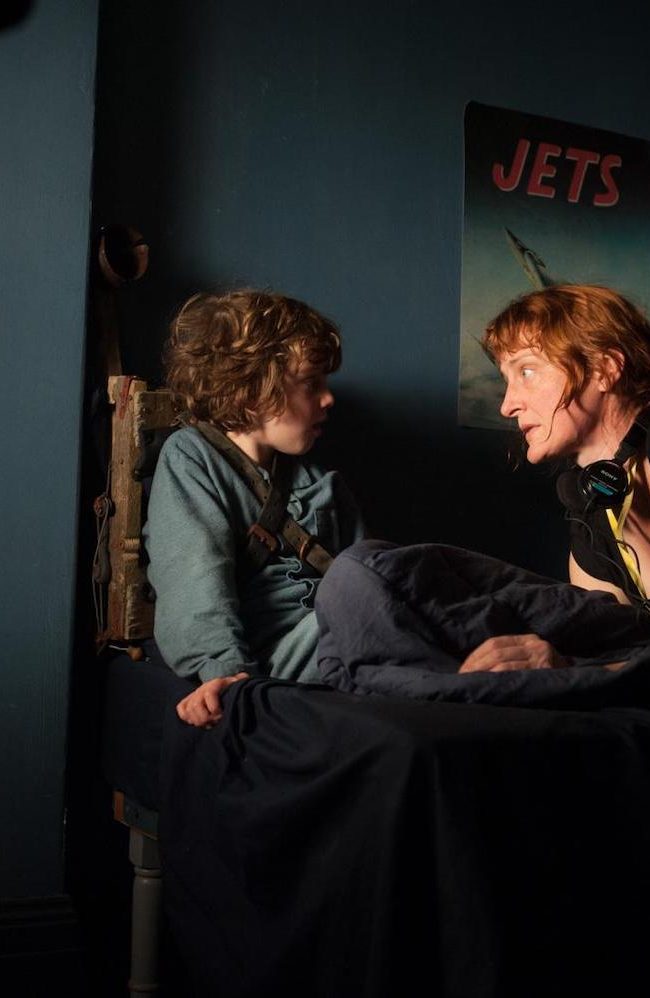


Pingback: THE 2012 HAMMER TO NAIL AWARDS – Hammer to Nail
Pingback: OVERSIMPLIFICATION OF HER BEAUTY, AN – Hammer to Nail
Pingback: HOME VIDEO PICKS – Hammer to Nail
Pingback: THE 2013 HAMMER TO NAIL AWARDS – Hammer to Nail